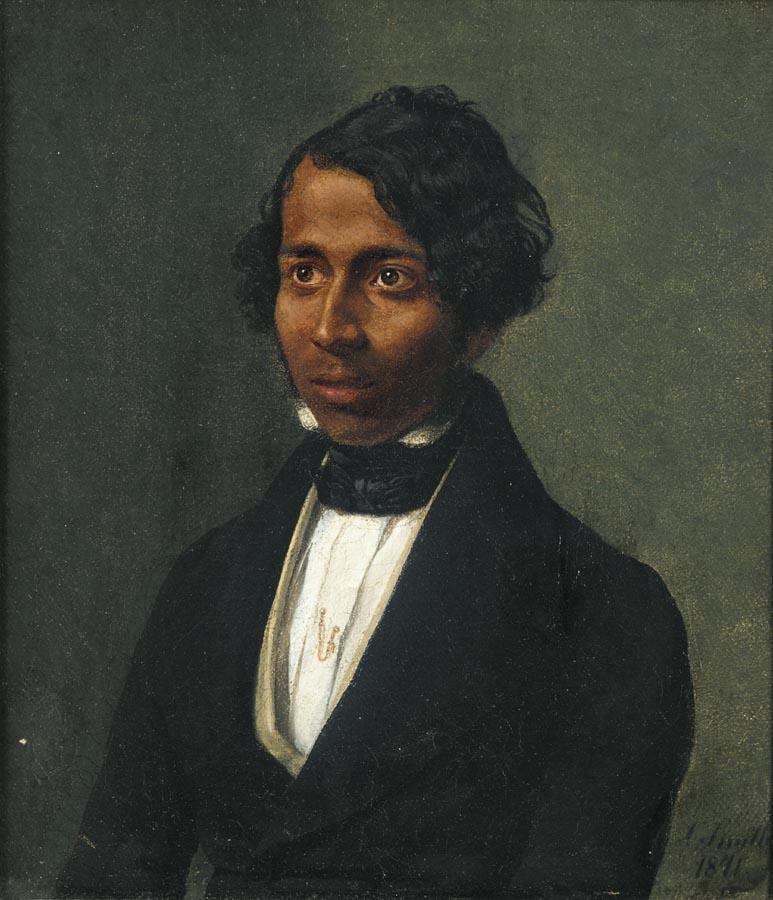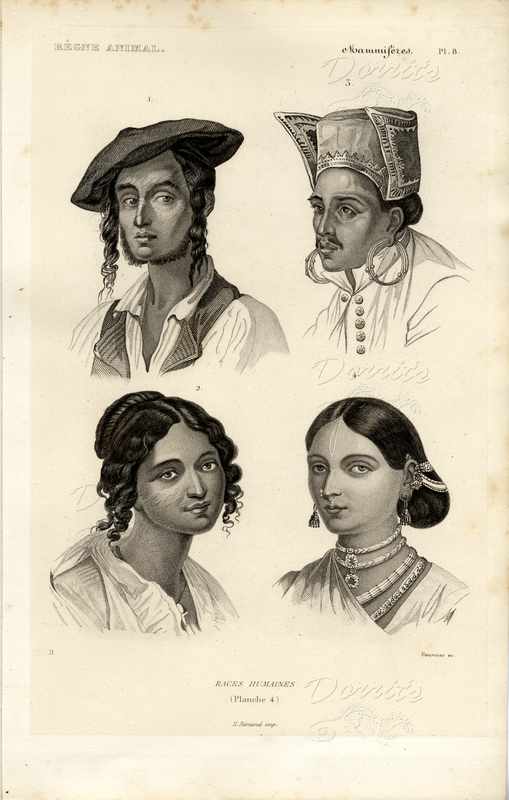

"A Portrait of an Indian Gentleman," by A. Smith, 1841
Source: http://search.sothebys.com/jsps/live/lot/LotDetail.jsp?lot_id=4FGNF
(downloaded May 2005)
"A PORTRAIT OF AN INDIAN GENTLEMAN, A. SMITH, ENGLISH SCHOOL, DATED 1841. 21.5 by 19cm. unframed32 by 29.5cm. framed; oil on canvas, half length, wearing a black coat and neck tie, with a white waistcoat; l.r.:L Smith / 1841
This painting is likely to portray an Indian in England, whether a domestic servant in the employ of a British East India Company representative on his return to England, or an independent merchant it is hard to tell. Nevertheless, such individuals were not unknown in Britain, and this portrait provides evidence for such an assertion in the artist's signature itself. Due to the autocratic nature of the Company, all artists were compelled to seek permission to practice in, and travel to and from India. These requests were recorded, and their careers studiously documented by contemporary chroniclers. 'A. Smith' however, does not appear to be an artist who made such a request; as such, it is probable that the portrait was painted in England. Moreover, the sitter's costume does not correspond to the attire of an Indian in his home country. Even the servants of the least tolerant of British ex-patriots were not expected to attire themselves in British dress, as verified by paintings of Company representatives in India; including a painting of Thomas Henchman by George Carter in circa 1786 (Archer 1979, no.191, p.275) and of the Palmer family by Francesco Renaldi in 1786 (Archer 1979, no.196, p.282), as well as numerous others that can be seen in Mildred Archer's India and British Portraiture 1770-1825, London, 1979.
Indian nationals working in eighteenth-century Britain largely arrived as servants, or lascars, the sailors that joined Navy ships in Asian waters, who came to make up the first Asian dockland communities of Victorian Britain. Other Indians to make the transition were such characters as Din Muhammad, an officer of the East India Company's Bengal Army, who travelled to Britain, married an Irish girl and in 1794 published the first book written by an Indian in English. He followed this achievement by opening the first Indian restaurant in 1810, and a traditional bath-house in Brighton in the 1820s (Farrington 2002, pp.119-124). A portrait of this enterprising gentleman hangs in the Brighton Museum and Art Gallery (Jackson&Jaffer 2004, no.1.3, p.3)."

Cuvier too, in the 1830's-40's, chose to illustrate two of his four representative Indians in western-style attire
Source: ebay, June 2005
"Animal Kingdom -- Mammals -- An Introduction, by Georges Cuvier. Mammals - Plate 008e: Men and Women from India. CUVIER, GEORGES. Le règne animal distribue d'après son organisation, pour servie de base a l'Histoire Naturelle des animaux. Paris, Fortin, Masson et Cie., 1836-1849. This print is from the second edition of Cuviers "Le Regne Animal" or the Animal Kingdom. This edition by pupils of Cuvier is known as the 'Disciples' edition and was published in 262 shipments between 1836 and 1849. It contains plates from well known engravers like Blanchard, Alcide D'Orbigny, Milne Edwards and Roulin."

A French (?) lady's apparently Indian servant, dressed in an exotically hybridized livery (an art print by Boussod, Valadon & Co, and Charles Scribner's Sons, 1888 and 1889)
Source: ebay, May 2006
== Indian Routes index == Indian Routes sitemap == Glossary == FWP's main page ==